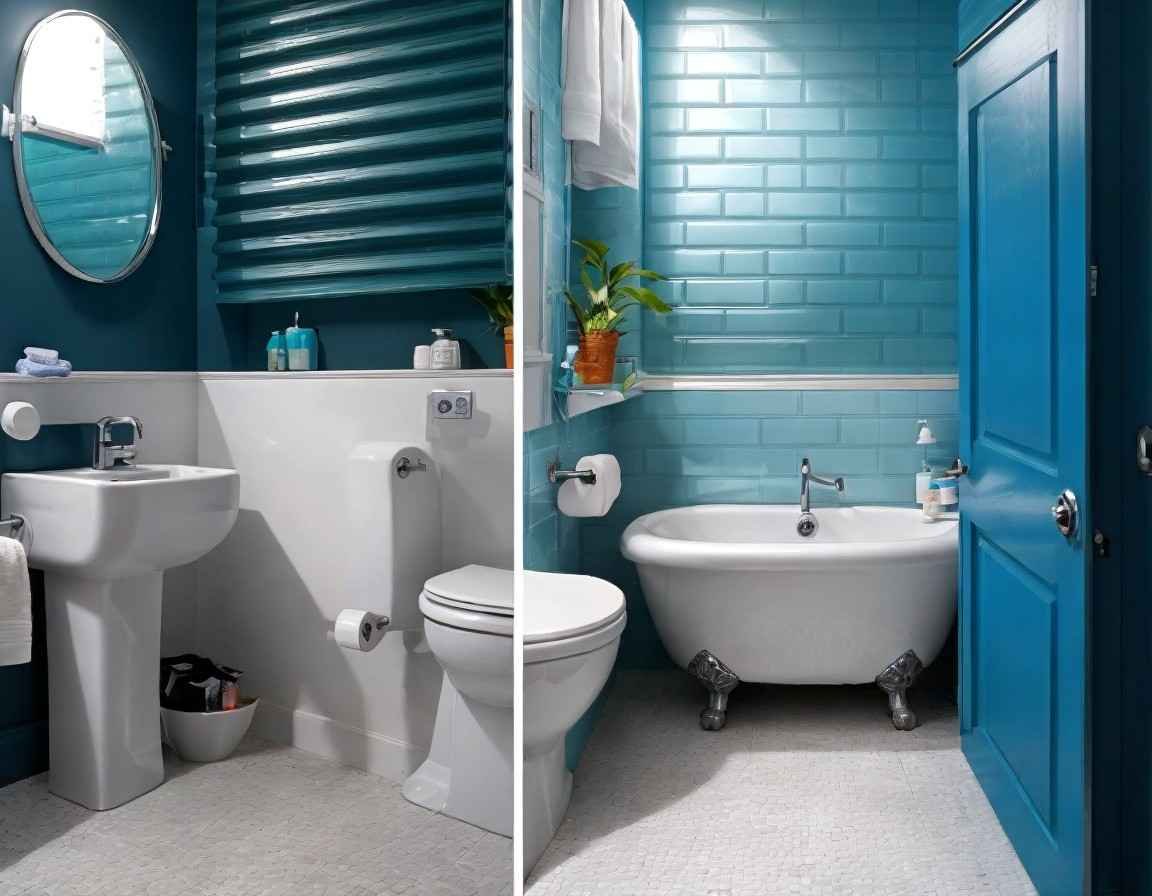Mould and mildew are common problems in bathrooms due to the damp and humid environment. Not only are they unsightly, but they can also pose health risks. This comprehensive guide will help you understand how to prevent mould and mildew, keeping your bathroom clean and healthy.
Why Preventing Mould and Mildew Matters
Mould and mildew can cause:
- Health Issues: Allergies, respiratory problems, and skin irritation.
- Structural Damage: They can weaken walls, ceilings, and fixtures.
- Unpleasant Odours: Musty smells that are hard to eliminate.
Preventing their growth ensures a safer and more pleasant bathroom environment.
Understanding Mould and Mildew
What Are Mould and Mildew?
- Mould: A type of fungus that forms black or green patches.
- Mildew: A specific kind of mould, usually white or grey, that grows on surfaces.
They thrive in damp, warm, and poorly ventilated areas, making bathrooms a perfect breeding ground.
Steps to Prevent Mould and Mildew
1. Improve Ventilation
- Use Exhaust Fans: Install a fan to remove moisture-laden air.
- Open Windows: If possible, open windows during and after showers.
- Keep Doors Open: Leave the bathroom door ajar when not in use to promote airflow.
2. Control Humidity Levels
- Dehumidifiers: Use a portable dehumidifier to reduce moisture.
- Humidity Monitor: Install a hygrometer to keep humidity below 50%.
- Shorter Showers: Limit shower time to reduce steam build-up.
3. Regular Cleaning
- Wipe Down Surfaces: After bathing, wipe tiles, walls, and fixtures with a dry cloth.
- Use Mould-Resistant Cleaners: Clean weekly with products designed to prevent mould.
- Clean Shower Curtains: Wash or replace shower curtains regularly.
4. Fix Leaks Promptly
- Inspect Plumbing: Check for dripping taps or pipes.
- Seal Gaps: Use silicone sealant around tubs and sinks to prevent water seepage.
- Repair Grout and Caulk: Replace damaged grout to stop water from penetrating walls.
5. Choose Mould-Resistant Materials
- Paint: Use mould-inhibiting paint on walls and ceilings.
- Tiles: Opt for non-porous tiles that resist moisture.
- Flooring: Select water-resistant flooring like vinyl or sealed tiles.
6. Remove Damp Items
- Hang Towels to Dry: Spread out towels to dry quickly.
- Avoid Clutter: Keep the bathroom free of damp clothes or rugs.
- Proper Storage: Use waterproof containers for toiletries.
7. Use Natural Remedies
- Vinegar Spray: Apply white vinegar to surfaces to inhibit mould growth.
- Tea Tree Oil: Mix with water and spray as a natural antifungal solution.
- Baking Soda: Use it to scrub surfaces and absorb moisture.
Identifying Early Signs of Mould and Mildew

Visual Indicators
- Discolouration: Black, green, or white spots on walls, ceilings, or grout.
- Peeling Paint or Wallpaper: Indicates moisture behind surfaces.
- Water Stains: Brownish stains on ceilings or walls.
Smell
- Musty Odour: A persistent damp smell even after cleaning.
Health Symptoms
- Allergies: Sneezing, coughing, or itchy eyes when in the bathroom.
- Respiratory Issues: Difficulty breathing or asthma flare-ups.
What to Do If You Find Mould or Mildew
Small Areas
- Protect Yourself: Wear gloves and a mask.
- Clean the Area: Use a mould-removing cleaner or natural solutions like vinegar.
- Dry Thoroughly: Ensure the area is completely dry after cleaning.
Large Infestations
- Professional Help: Contact a mould remediation specialist.
- Avoid Disturbing Mould: Do not try to remove large areas yourself, as spores can spread.
Summary Table
| Prevention Method | Action Steps |
| Improve Ventilation | Use exhaust fans, open windows, keep doors open |
| Control Humidity | Use dehumidifiers, monitor humidity, shorter showers |
| Regular Cleaning | Wipe surfaces, use mould-resistant cleaners |
| Fix Leaks | Inspect plumbing, seal gaps, repair grout |
| Choose Resistant Materials | Mould-inhibiting paint, non-porous tiles |
| Remove Damp Items | Dry towels, reduce clutter, proper storage |
| Use Natural Remedies | Vinegar spray, tea tree oil, baking soda |
Conclusion
Preventing mould and mildew in your bathroom is essential for maintaining a healthy home. By implementing these simple steps, you can keep your bathroom clean, fresh, and safe for your family.
FAQs
No, painting over mould does not eliminate it. The mould will continue to grow beneath the paint, and it may eventually resurface. It’s essential to remove the mould completely before repainting.
A solution of bleach and water (1 part bleach to 10 parts water) can effectively kill mould. Alternatively, white vinegar or commercial mould removers are also effective.
It’s advisable to clean your bathroom thoroughly at least once a week. High-moisture areas like showers and tubs may require more frequent cleaning.
Yes, prolonged exposure to mould can cause health issues like allergic reactions, respiratory problems, and skin irritation. It’s important to address mould growth promptly.
Yes, a dehumidifier reduces humidity levels, making it harder for mould and mildew to grow. It’s especially useful in bathrooms without adequate ventilation.





